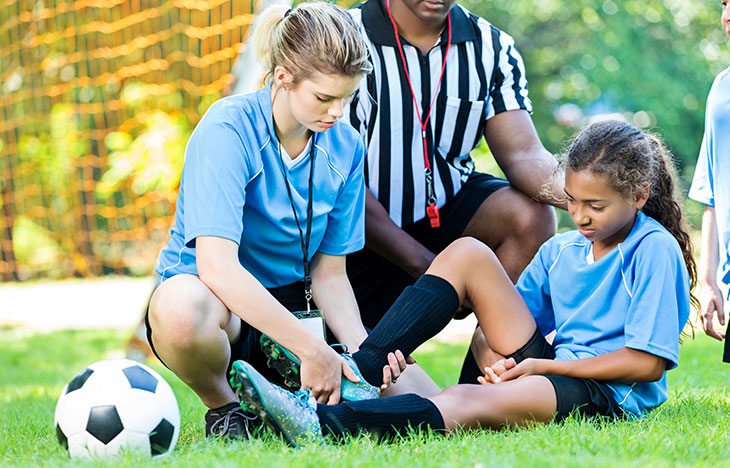Youth sports are an amazing way for kids and teens to stay active, build teamwork skills, and have fun. Whether it’s soccer, basketball, gymnastics, or swimming, participating in sports helps children develop both physically and mentally. However, with physical activity comes the risk of injury. And unfortunately, sports injuries in young athletes are quite common.
In this article, we’ll explore the most common sports injuries in youth, what causes them, how to prevent them, and what parents and coaches can do to support safe play.
Why Are Youth Prone to Sports Injuries?
Young athletes are still growing. Their bones, muscles, and joints are not as strong or stable as adults, making them more vulnerable to injury. Some common reasons include:
- Lack of proper warm-up or stretching
- Overuse of certain body parts
- Improper technique
- Inadequate rest
- Intense training or playing multiple sports at once
Also, children might not always speak up when something hurts, which can lead to untreated or worsened injuries.
1. Sprains and Strains
What Are They?
- Sprains occur when ligaments (which connect bones to other bones) are stretched or torn.
- Strains involve muscles or tendons being overstretched or torn.
These are among the most common injuries in youth sports. Ankles, knees, and wrists are the most frequently affected areas.
Symptoms:
- Pain
- Swelling
- Bruising
- Difficulty moving the affected area
Common Causes:
- Sudden twists
- Falls
- Improper landings
- Quick direction changes (especially in sports like basketball or soccer)
2. Growth Plate Injuries
Children have areas of growing tissue at the ends of long bones, called growth plates. These are soft and can be easily injured during sports.
Common in:
- Contact sports
- Gymnastics
- Track and field
Symptoms:
- Persistent pain near a joint
- Swelling or tenderness
- Trouble moving the limb normally
Note: These injuries can affect how bones grow and may require prompt medical attention.
3. Overuse Injuries
Instead of happening all at once, overuse injuries build up over time due to repeated stress on the same muscles, joints, or bones. These are very common in young athletes who practice intensively without adequate rest.
Common Overuse Injuries:
- Shin splints (pain in the front of the lower leg)
- Runner’s knee
- Little League elbow (common in baseball players)
- Swimmer’s shoulder
Why They Happen:
- Too much training
- Playing year-round without breaks
- Improper technique
- Poor footwear or equipment
Overuse injuries can be prevented by varying activities, ensuring rest days, and paying attention to early pain signs.
4. Fractures (Broken Bones)
Broken bones can happen suddenly and are quite common in contact or high-impact sports like football, hockey, and skateboarding.
Symptoms:
- Sudden, severe pain
- Swelling
- Bruising
- Inability to move or put weight on the limb
- A noticeable deformity in severe cases
Fractures can be minor or serious and often require X-rays and possibly a cast or even surgery in some cases.
5. Concussions
A concussion is a type of brain injury caused by a blow to the head or body that shakes the brain inside the skull. Concussions are more common in sports like football, soccer, and basketball.
Symptoms:
- Headache
- Dizziness
- Nausea or vomiting
- Confusion
- Trouble concentrating
- Blurred vision
- Sensitivity to light or noise
Any suspected concussion should be taken seriously. The athlete should stop playing immediately and be evaluated by a healthcare professional.
6. Knee Injuries
The knee is a complex joint and is especially vulnerable in youth athletes. One common injury is a patellar tendonitis (jumper’s knee), which causes pain just below the kneecap.
Another serious one is an ACL tear (anterior cruciate ligament), which can require surgery and long recovery.
Common in:
- Soccer
- Basketball
- Volleyball
- Gymnastics
Symptoms:
- Popping sound (in ACL injuries)
- Swelling
- Inability to bear weight
- Knee instability
How to Prevent Sports Injuries in Youth
Prevention is key. Here are some simple but powerful steps that can protect young athletes:
1. Warm-Up and Stretch:
Always begin with light cardio and dynamic stretching before practice or games.
2. Focus on Proper Technique:
Correct posture and movement reduce the risk of injury, especially in sports with repetitive actions.
3. Rest and Recovery:
Encourage at least one or two rest days a week and avoid playing through pain.
4. Use Protective Gear:
Helmets, pads, mouthguards, and appropriate footwear are essential in many sports.
5. Avoid Specializing Too Early:
Playing different sports throughout the year helps prevent overuse injuries and supports overall physical development.
Role of Parents and Coaches
Adults play a crucial role in helping kids stay safe. Here’s how:
- Watch for warning signs: Limping, recurring pain, or favoring one limb are red flags.
- Encourage open communication: Kids should feel comfortable reporting pain or fatigue.
- Don’t push too hard: Avoid pressuring children to perform when injured or tired.
- Seek medical help early: Early diagnosis prevents small injuries from becoming serious.
Conclusion
Youth sports are an incredible part of growing up, offering fun, friendship, and fitness. But it’s important to be aware of the risks and take steps to avoid common sports injuries. From sprains and fractures to overuse injuries and concussions, understanding these risks helps keep young athletes safe, healthy, and happy on the field.
By combining education, awareness, and proper care, we can help children enjoy sports safely—and for a lifetime.
Frequently Asked Questions (FAQs)
1. What should I do if my child gets injured during a game?
Stop the activity immediately. Apply ice, keep the area elevated, and seek medical attention if the pain is severe, swelling occurs, or if your child can’t use the injured part normally.
2. Can my child continue to play sports with a minor injury?
It’s not recommended. Even minor injuries need proper care and rest to avoid long-term problems. Always consult a healthcare provider before returning to sports.
3. Are overuse injuries dangerous?
Yes, overuse injuries can become serious if not treated early. They can affect growth, cause chronic pain, and even end a young athlete’s participation in sports.
4. What’s the safest sport for my child?
No sport is 100% injury-free, but swimming, track and field, and tennis tend to have lower injury rates compared to contact sports like football or hockey. What matters more is supervision, coaching quality, and protective gear.
5. How much rest should my child have between sports seasons?
Ideally, children should take a break of at least 1–2 months from a specific sport each year to allow their bodies to recover and prevent burnout.






